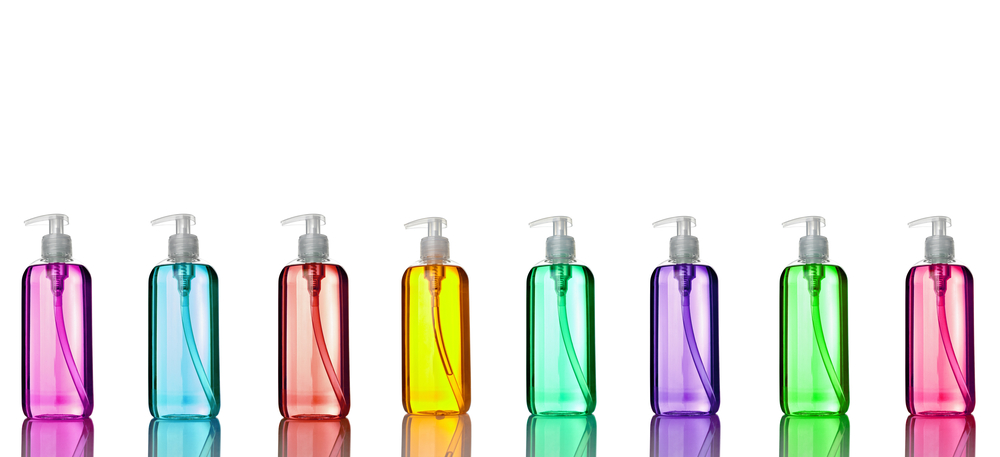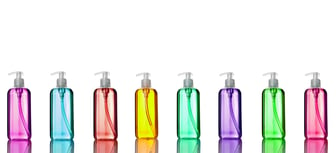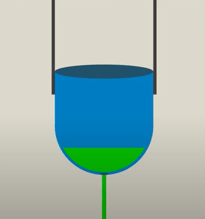
 When selecting a pump for your system, it's important to understand the fluid you're pumping to its fullest extent. What happens when it's heated? What happens when energy is added? When choosing the pump you need, there are a number of factors that come into play, and viscosity of the fluid is one of them. In this post, you'll learn the basics of viscosity, and how heat and energy can affect the viscosity of fluid.
When selecting a pump for your system, it's important to understand the fluid you're pumping to its fullest extent. What happens when it's heated? What happens when energy is added? When choosing the pump you need, there are a number of factors that come into play, and viscosity of the fluid is one of them. In this post, you'll learn the basics of viscosity, and how heat and energy can affect the viscosity of fluid.
Viscosity is a fluid property which is resistance to shear when energy is applied. This characteristic must be taken into account when making process pump selections and in determining friction losses in a fluid process system. Centrifugal pump performance is based on testing with water. Positive displacement pumps performance is based on using water or oils where lubrication is required.
Viscosity is commonly expressed in units of SSU (Seconds Saybolt Universal), cPs (Centipoise) or cSt (Centistokes). The relationship between these units is expressed in the following equations:
SSU = cSt x 4.55 (where cSt are greater than 50)
cSt = cPs/SG (specific gravity)

Liquids that exhibit reduced viscosity with rising temperature are referred to as Newtonian. Motor oils would be a great example of Newtonian fluids.
Liquids that exhibit reduced viscosity when energy is applied are referred to as shear thinning or thixotropic. Paint would be an example of a shear thinning liquid.

Liquids that exhibit increasing viscosity when energy is applied are referred to as shear thickening or dilatant. Candy compounds, for instance, tend to thicken when energy is applied.
A testing device known as a viscometer is used to determine liquid viscosity. Tests are typically conducted through a range of shear rates and temperatures with the resultant viscosity plotted in graphical form. A given flow rate through a specific sized pipe determines the shear rate at that line velocity. Knowing the temperature and shear rate for the operating conditions defines the viscosity for those conditions.
A kinematic viscometer is a type of viscometer that uses a cup that you fill with a liquid and test how long the liquid takes to exit through a hole in the bottom of the cup. The longer the cup takes to empty, the more viscous the liquid. Water, oil, paint, etc are great examples of liquid for the use of a kinematic viscometer but for more thick liquids we need to use a different approach. A dynamic viscometer is used for liquids that are not suitable for kinematic viscometers because they would take a very long time to exit out of the bottom of the hole in the cup. Honey is an example of a liquid that would use a dynamic viscometer. Dynamic viscometers use a rotating spindle submerged in the liquid being used. The shear sensitivity and shear stresses are being measured as the liquid creates viscous drag. It is important that the viscosity measurements be taken at pumping temperature as a result of temperature having a large impact on viscosity. Shown below is a kinematic viscometer.

When the viscosity is known along with the other operating parameters, the type of pump to use can be determined. In general, a centrifugal pump is suitable for low viscosity fluids since the pumping action generates high liquid shear. As the viscosity increases, the pump performance has to be adjusted to account for the additional resistance to shear. Typically there is a small reduction in flow, a more significant reduction in head or pressure, and a substantial increase in power draw.
Generally speaking, positive displacement pumps are the best selection when handling viscous fluids. They typically operate at lower speeds and impart low amounts of shear energy to the fluid compared to a centrifugal pump. There are a variety of positive displacement pumps to choose from based on the application requirements.
Viscosity is an important factor in determining friction losses due to shear energy in a fluid process system and in the selection and sizing of valves, filters, instrumentation and piping. There are a variety of reference materials available that provide friction loss data for a given flow rate, pipe size and fluid viscosity. Data also is available that converts pipe fittings and valves into equivalent straight length of pipe.
When handling viscous fluids, there is no substitute for actual operating experience in determining how the fluid will behave. This information combined with available viscosity data will allow a proper analysis of the fluid process system characteristics. Once the fluid process system has been designed and the pump operating parameters defined, the proper pump selection can be made.
Is viscosity putting you in a sticky situation? Ask us about it! We gladly provide technical assistance to businesses in Wisconsin and Upper Michigan.
These Stories on Pumps
Headquarters and Service Center
Located outside Green Bay, WI
707 Ford Street
Kimberly, WI 54136
920-733-4425
OptiFlow Design and Build Center
1002 Truman Street
Kimberly, WI 54136
920-733-4425
Burnsville Service Center
12265 Nicollet Avenue
Burnsville, MN 55337
952-444-1949
Grand Rapids Service Center
26489 Industrial Blvd
Cohasset, MN 55721
952-444-1949
© Copyright 2024. Crane Engineering. All Rights Reserved. Privacy Policy.